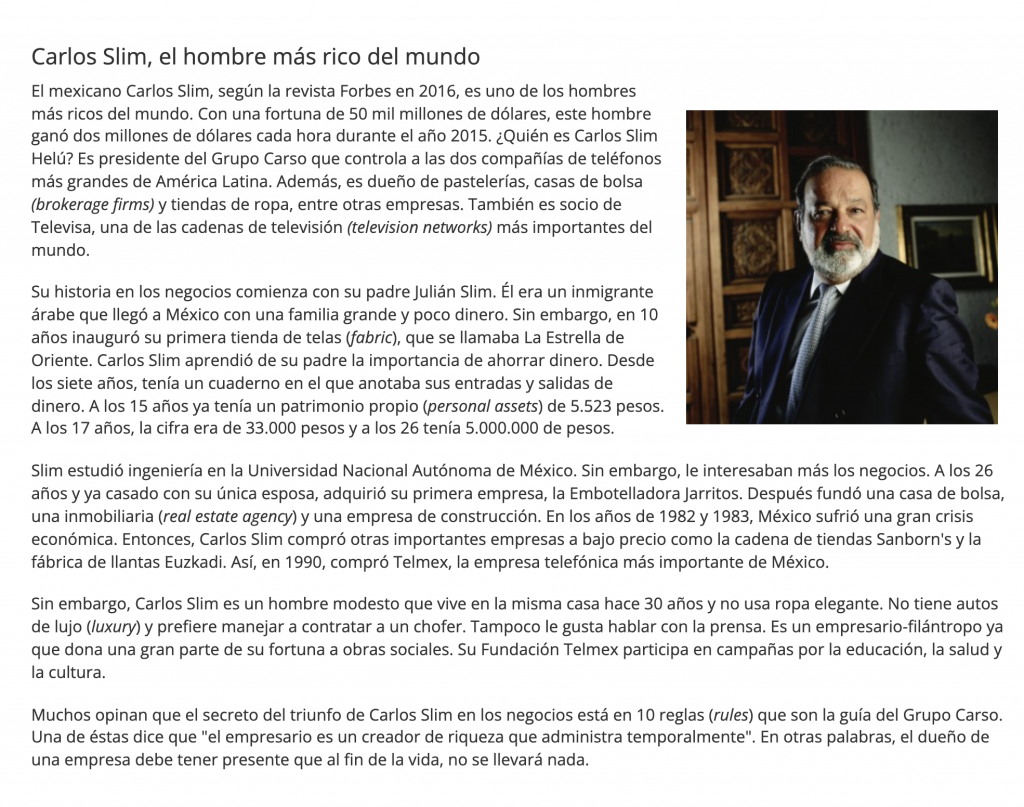Interpretive, Interpersonal, and Presentational Modes of Communication
Exploring Culture
One practice that helped me gain understanding of cultural perspectives was listening to Spanish music on YouTube. I like listen to the music and watch the music videos because It helps me to better understand the music. Seeing the lyrics being interpreted through the music videos helped me understand the lyrics better. One song I really like is “Qué Hiciste” by Jennifer Lopez:
I also continued watching spanish cooking videos on Youtube to learn more about Spanish food and how it compares and contrasts from American food and cooking practices.
Listening to spanish music and watching Spanish cooking videos throughout the semester made me realize how much both of these things are heavily influenced based on what is liked in a specific location. Most Spanish music is festive and upbeat because that is what is preferred amongst Spanish audiences, and Like American audiences, most Spanish music is centered around love/relationships. It is also interesting to see how certain Spanish dishes have similarities to dishes from other cultures. For example. Seafood Paella, in my opinion, is somewhat similar to Fried rice from Asian culture. The main difference between the two is flavor.
Engaging in Communities
During the semester, I tried tutor.com for extra Spanish help. I was able to receive clarification on conjugation and other subjects from a native spanish speaker. This helped me as I completed assignments throughout the semester.
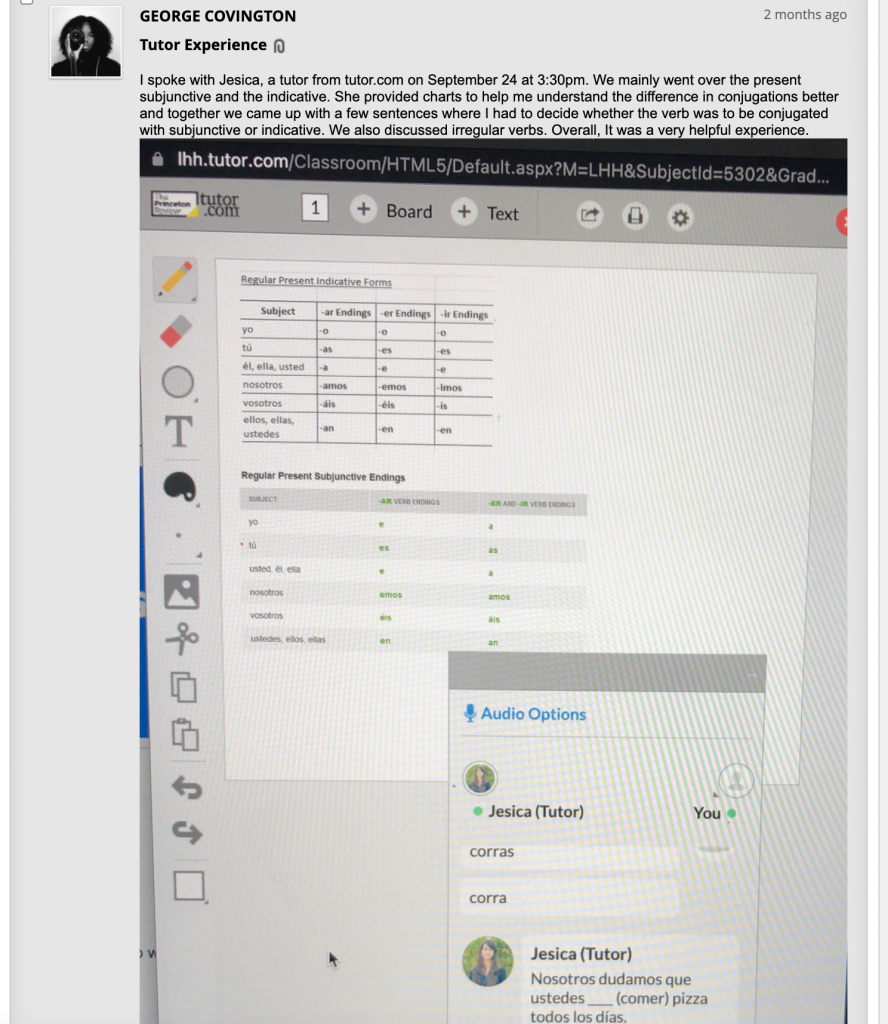
Interpersonal Communication
Throughout the semester, I completed various interpersonal communication activities, including 4 interviews and responding to various discussion boards. Prompts were provided for each assignment to guide me as I was completing them.
With each interpersonal communication activity, I did grow in a way, but I also faced many difficulties. The interviews were the most difficult for me because there I really had to make sure I was prepared for whatever my partner or professor would say. That, In addition to speaking to someone I had never met before, induced some anxiety. I did grow with each of these assignments, learning new vocabulary with each one, and I also got the opportunity to hear how native spanish speakers pronounced words with accents. With preparation, I excelled with each interview, but in the future, I would still do more preparation. Reading and responding to each of the discussion board posts really helped me expand my vocabulary and learn more about the spanish culture.
LINK TO TALKABROAD INTERVIEW 1 https://drive.google.com/file/d/1ZXCI9aRrh_Iy6GHa8KbqAnVe3R-yxm9X/view?usp=sharing
LINK TO TALKABROAD INTERVIEW 2 https://drive.google.com/file/d/1kZRYQokFJJ4yqJLmGntRg1fvw4BYs-Hi/view?usp=sharing
Instructions
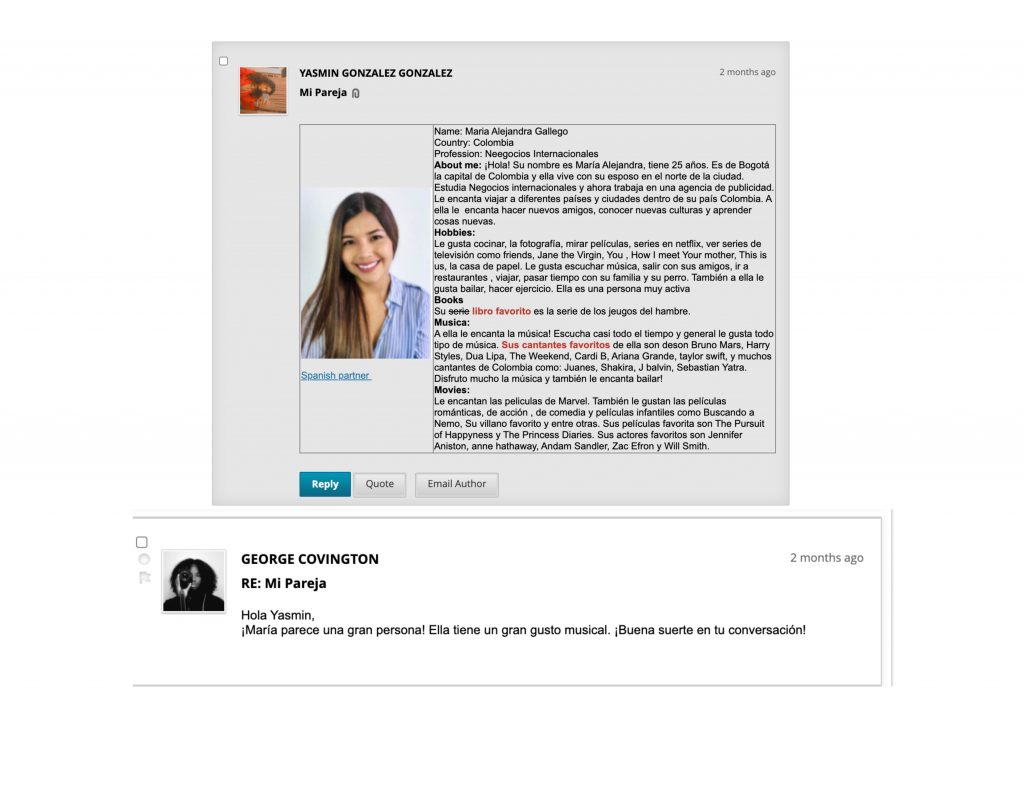
Presentational Speaking
Throughout the semester, I completed various Virtual Chat VHL assignments that required me to respond to automated questions in Spanish
During these assignments I often had to practice reciting each answer before recording as I had trouble pronouncing some of the words. I usually looked up the pronunciation of the words I had trouble with. For the most part, though, I did pretty well with pronunciation as I was familiar with most of the words. In the future, I will work on learning more words and vocabulary so pronunciation won’t be an issue.
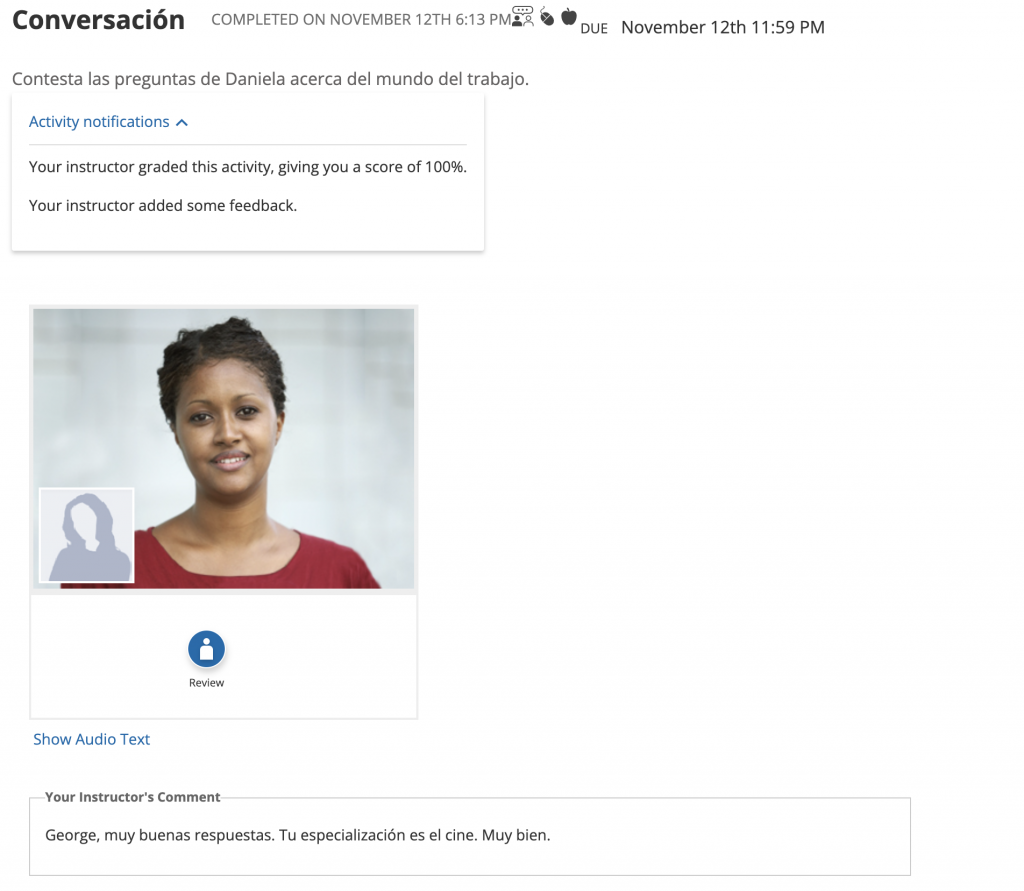
Presentational Writing
In Spanish 202, I completed a couple Discussion Board posts, where we often had to read an article or watch a video and write a response based on it. For one of the discussion boards, We had to copy and paste our TalkAbroad Partner descriptions and correct any errors (pictured below).
As I completed more discussion boards, responding in Spanish became much easier. It also helped me throughout my other assignments. Sometimes when I had to view videos for the discussion board, I would have difficulty understanding them, but all I did was rewatch the videos until I fully understood them. I think that thanks to all of the other assignments around the discussion boards, I excelled at responding in spanish. In the future, It would probably help if I did more research outside of the article or video provided to be able to make a longer response.

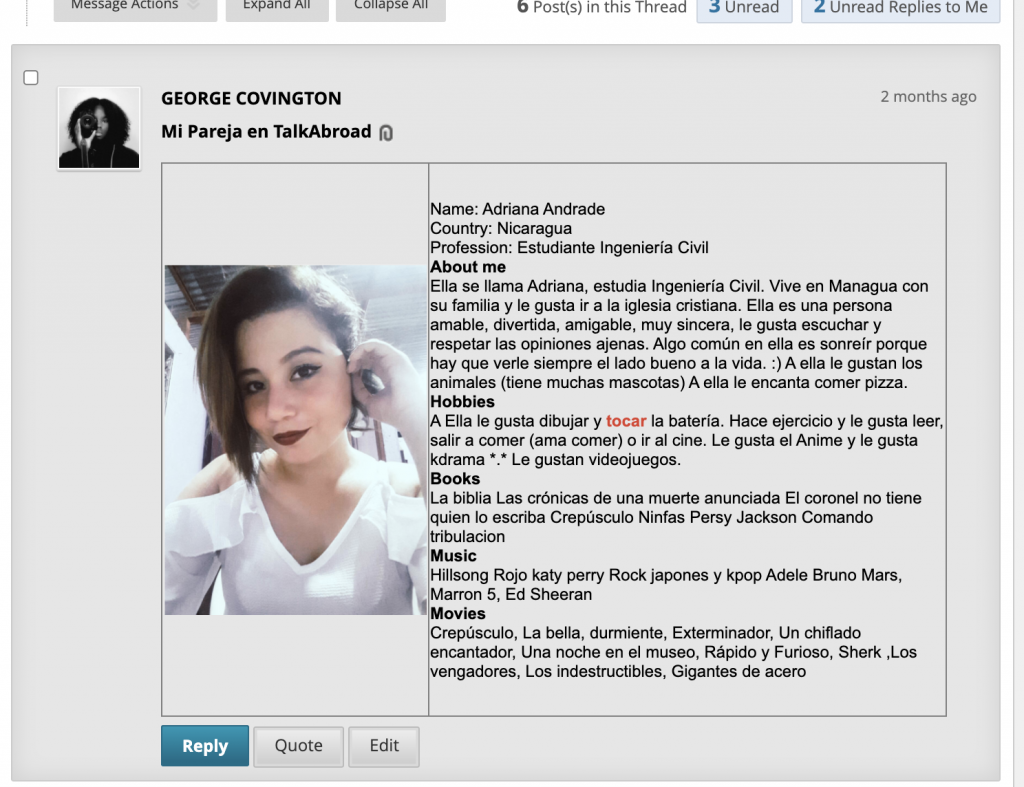
Interpretive Listening
Throughout the semester, Professor Molina-Martin provided quizlets for the vocabulary in each module. I would frequently study these quizlets and use the audio feature to listen to each word repeatedly and recite the word on my own until I pronounced it correctly. We also completed VHL assignments that required us to listen to and interpret videos.
Initially, some of the words were a little difficult to pronounce, but having the audio feature helped me with any issues. There were also pictures beside the words so I could remember what each word was.
For the VHL videos, sometimes I would rewatch them until I fully understood what was being said in the video.
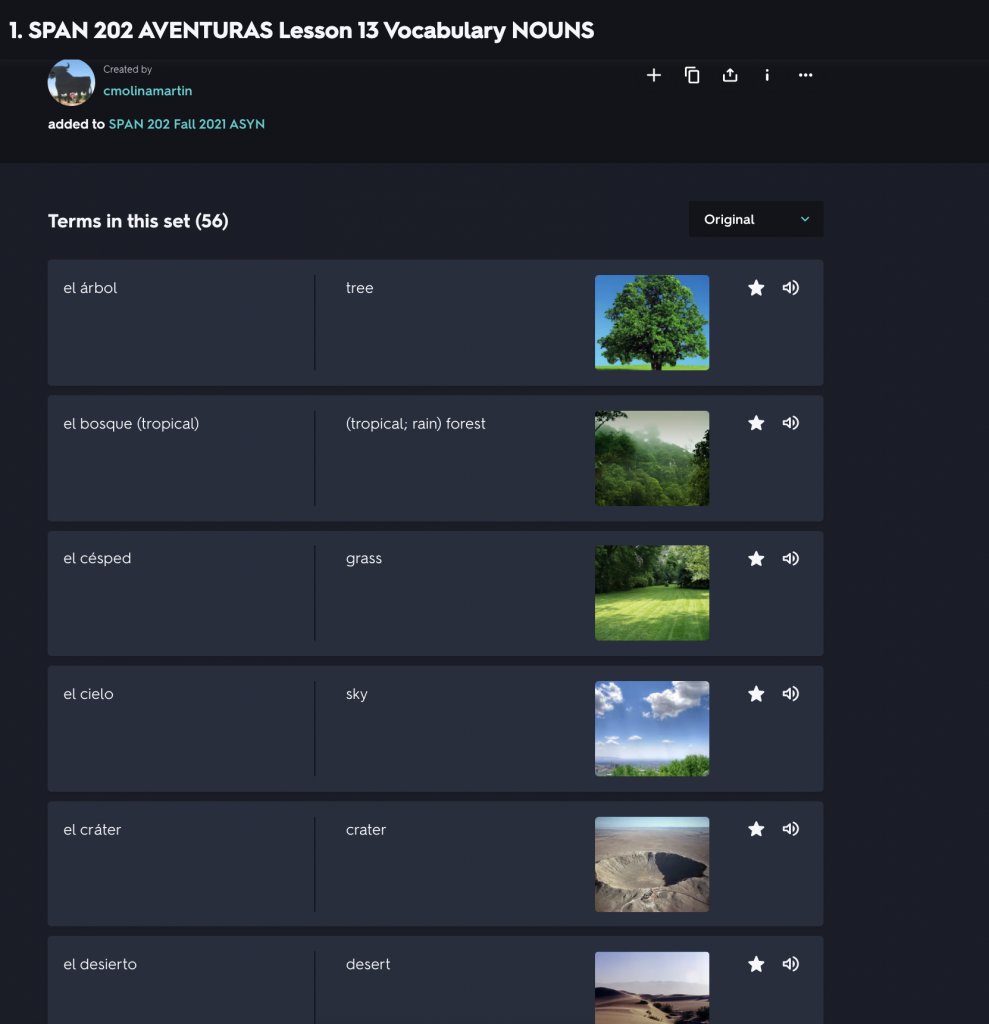
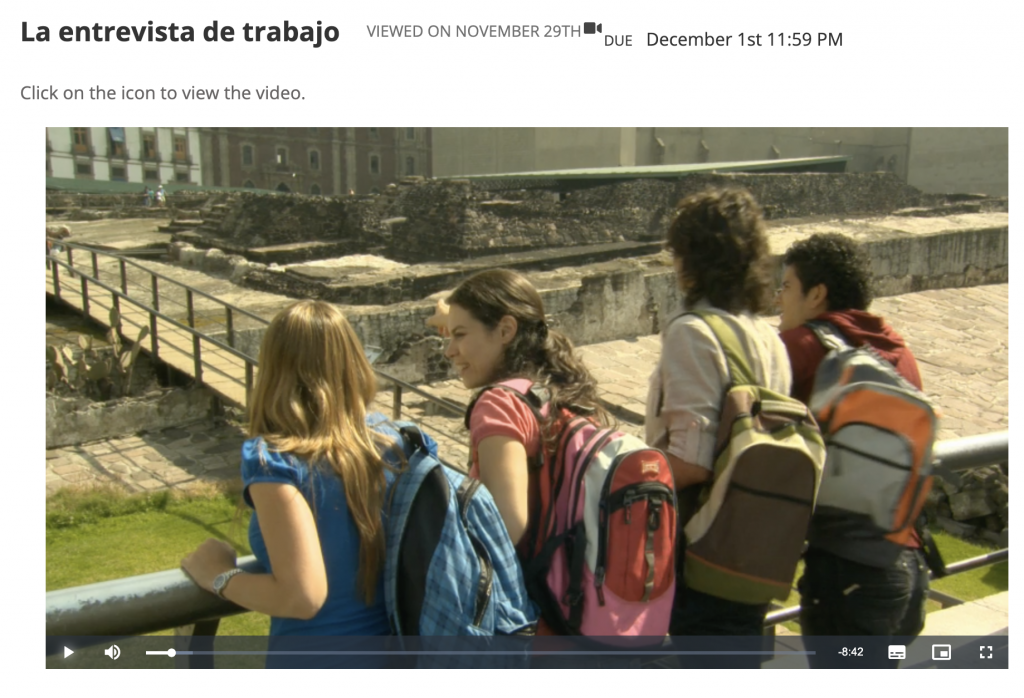
Interpretive Reading
Throughout the semester, We had to complete various Lectura and Cultura assignments in VHL Central. These assignments required me to read an article or short story related to the chapter to complete questions.
When reading some of the Lectura and Cultura Assignments, I sometimes was unfamiliar with certain words. I overcame that by using the vocabulary tools provided by VHL Central to figure out what the word meant. I learned a lot of interesting information while completing these assignments. In one of the Lecturas (pictured below), I learned about Carlos Slim, “the richest man in the world”. While I was reading this Article, I learned a lot Carlos Slim and his background. Each of these assignments helped me to grow as a Spanish speaker by expanding my vocabulary.
